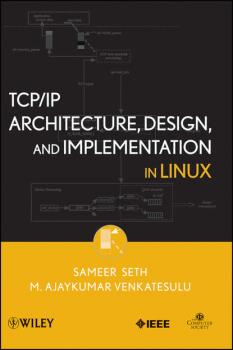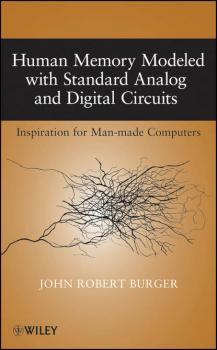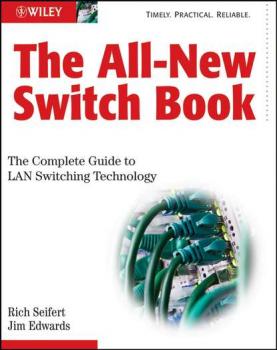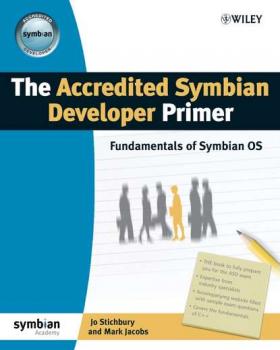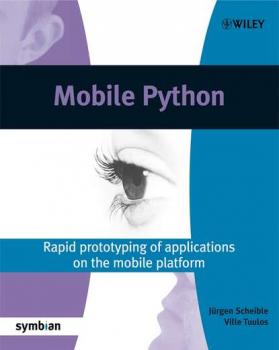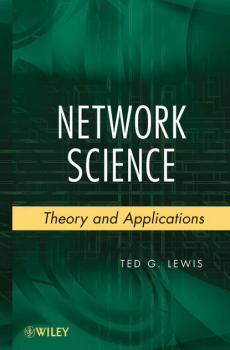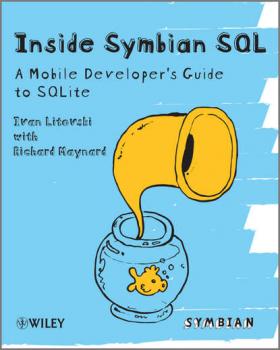ОС и Сети
Различные книги в жанре ОС и СетиSecurity Controls for Sarbanes-Oxley Section 404 IT Compliance
The Sarbanes-Oxley Act requires public companies to implement internal controls over financial reporting, operations, and assets-all of which depend heavily on installing or improving information security technology Offers an in-depth look at why a network must be set up with certain authentication computer science protocols (rules for computers to talk to one another) that guarantee security Addresses the critical concepts and skills necessary to design and create a system that integrates identity management, meta-directories, identity provisioning, authentication, and access control A companion book to Manager's Guide to the Sarbanes-Oxley Act (0-471-56975-5) and How to Comply with Sarbanes-Oxley Section 404 (0-471-65366-7)
TCP/IP Architecture, Design and Implementation in Linux
This book provides thorough knowledge of Linux TCP/IP stack and kernel framework for its network stack, including complete knowledge of design and implementation. Starting with simple client-server socket programs and progressing to complex design and implementation of TCP/IP protocol in linux, this book provides different aspects of socket programming and major TCP/IP related algorithms. In addition, the text features netfilter hook framework, a complete explanation of routing sub-system, IP QOS implementation, and Network Soft IRQ. This book further contains elements on TCP state machine implementation,TCP timer implementation on Linux, TCP memory management on Linux, and debugging TCP/IP stack using lcrash
Human Memory Modeled with Standard Analog and Digital Circuits
Gain a new perspective on how the brain works and inspires new avenues for design in computer science and engineering This unique book is the first of its kind to introduce human memory and basic cognition in terms of physical circuits, beginning with the possibilities of ferroelectric behavior of neural membranes, moving to the logical properties of neural pulses recognized as solitons, and finally exploring the architecture of cognition itself. It encourages invention via the methodical study of brain theory, including electrically reversible neurons, neural networks, associative memory systems within the brain, neural state machines within associative memory, and reversible computers in general. These models use standard analog and digital circuits that, in contrast to models that include non-physical components, may be applied directly toward the goal of constructing a machine with artificial intelligence based on patterns of the brain. Writing from the circuits and systems perspective, the author reaches across specialized disciplines including neuroscience, psychology, and physics to achieve uncommon coverage of: Neural membranes Neural pulses and neural memory Circuits and systems for memorizing and recalling Dendritic processing and human learning Artificial learning in artificial neural networks The asset of reversibility in man and machine Electrically reversible nanoprocessors Reversible arithmetic Hamiltonian circuit finders Quantum versus classical Each chapter introduces and develops new material and ends with exercises for readers to put their skills into practice. Appendices are provided for non-experts who want a quick overview of brain anatomy, brain psychology, and brain scanning. The nature of this book, with its summaries of major bodies of knowledge, makes it a most valuable reference for professionals, researchers, and students with career goals in artificial intelligence, intelligent systems, neural networks, computer architecture, and neuroscience. A solutions manual is available for instructors; to obtain a copy please email the editorial department at [email protected].
The All-New Switch Book
This much-needed update to the bestselling guide on the extensive changes to the local area networks (LAN) switching technologies explains why LAN switching technologies are critical to network design. This in-depth guide covers the capabilities, application, and design of LAN switches and switched internetworks and examines the significant changes that have taken place since the publication of the first edition seven years ago. You’re sure to appreciate the witty writing style and easy-to-follow format on such an often-complicated subject matter.
The Accredited Symbian Developer Primer
This new book, first in the Academy series, is the official guide to the ASD exam, priming candidates for the exam, explaining exactly what they need to know. The Primer explains the knowledge tested in the Accredited Symbian Developer exam, identifying and explaining the topics examined. Each of the exam's objectives is succinctly described, with the appropriate concepts explained in detail. Both standard C++ and topics specific to Symbian C++, such as Symbian Types and Declarations, Platform Secuirty, and Cleanup Stack, are covered. The authors are experts in the field of Symbian C++ and contributed extensively to the design and creation of questions for the ASD exam. Jo Stichbury is the author of Symbian OS Explained and both authors are, of course, fully qualified Accredited Symbian Developers.
The Joy of SOX
The Sarbanes-Oxley Act (SOX) was passed in 2002 in response to a series of high-profile corporate scandals and requires that public companies implement internal controls over financial reporting, operations, and assets; these controls depend heavily on installing or improving information technology and business methods Written by one of the most visible personalities on the tech-biz side of the SOX discussion, this highly readable, engaging book provides a clear road map for integrating SOX compliance into the fabric of everyday IT infrastructure and business practice Shows the reader how to leverage and use service-oriented architecture (SOA), a set of technologies that enables interoperation of heterogeneous computer systems, to achieve the level of internal controls over IT that SOX mandates
Mobile Python
Mobile Python is the introduction of Python programming language to the mobile space. This practical hands-on book teaches readers how to realize their application ideas on the Symbian OS. Programming on the Symbian mobile platform has been difficult and time consuming in the past. This innovative new title will remedy this problem. Chapters deal with topics that are based on Python S60 features and presented in an order that lets the user learn first the “simple to code” ones and then increasing in complexity.
Network Science
A comprehensive look at the emerging science of networks Network science helps you design faster, more resilient communication networks; revise infrastructure systems such as electrical power grids, telecommunications networks, and airline routes; model market dynamics; understand synchronization in biological systems; and analyze social interactions among people. This is the first book to take a comprehensive look at this emerging science. It examines the various kinds of networks (regular, random, small-world, influence, scale-free, and social) and applies network processes and behaviors to emergence, epidemics, synchrony, and risk. The book's uniqueness lies in its integration of concepts across computer science, biology, physics, social network analysis, economics, and marketing. The book is divided into easy-to-understand topical chapters and the presentation is augmented with clear illustrations, problems and answers, examples, applications, tutorials, and a discussion of related Java software. Chapters cover: Origins Graphs Regular Networks Random Networks Small-World Networks Scale-Free Networks Emergence Epidemics Synchrony Influence Networks Vulnerability Net Gain Biology This book offers a new understanding and interpretation of the field of network science. It is an indispensable resource for researchers, professionals, and technicians in engineering, computing, and biology. It also serves as a valuable textbook for advanced undergraduate and graduate courses in related fields of study.
Network Security
A unique overview of network security issues, solutions, and methodologies at an architectural and research level Network Security provides the latest research and addresses likely future developments in network security protocols, architectures, policy, and implementations. It covers a wide range of topics dealing with network security, including secure routing, designing firewalls, mobile agent security, Bluetooth security, wireless sensor networks, securing digital content, and much more. Leading authorities in the field provide reliable information on the current state of security protocols, architectures, implementations, and policies. Contributors analyze research activities, proposals, trends, and state-of-the-art aspects of security and provide expert insights into the future of the industry. Complete with strategies for implementing security mechanisms and techniques, Network Security features: * State-of-the-art technologies not covered in other books, such as Denial of Service (DoS) and Distributed Denial-of-Service (DDoS) attacks and countermeasures * Problems and solutions for a wide range of network technologies, from fixed point to mobile * Methodologies for real-time and non-real-time applications and protocols
Inside Symbian SQL
This is the definitive guide for Symbian C++ developers looking to use Symbian SQL in applications or system software. Since Symbian SQL and SQLite are relatively new additions to the Symbian platform, Inside Symbian SQL begins with an introduction to database theory and concepts, including a Structured Query Language (SQL) tutorial. Inside Symbian SQL also provides a detailed overview of the Symbian SQL APIs. From the outset, you will “get your hands dirty” writing Symbian SQL code. The book includes snippets and examples that application developers can immediately put to use to get started quickly. For device creators and system software developers, Inside Symbian SQL offers a unique view into the internals of the implementation and a wealth of practical advice on how to make best and most efficient use of the Symbian SQL database. Several case studies are presented – these are success stories 'from the trenches', written by Symbian engineers. Special Features: The book assumes no prior knowledge of databases Includes detailed and approachable explanations of database concepts Easy to follow SQL tutorial with SQLite examples Unique view into the Symbian SQL internals Troubleshooting section with solutions to common problems Written by the Symbian engineers who implemented SQLite on Symbian, with more than 40 years combined Symbian C++ experience, this book is for anyone interested in finding out more about using a database on Symbian.

